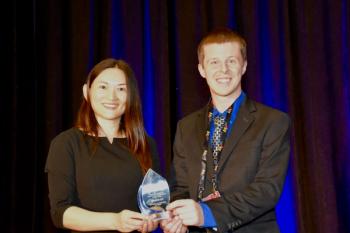
- Spectroscopy-06-01-2015
- Volume 30
- Issue 6
From the Editor
Milestone events naturally prompt reflection. For Spectroscopy's celebration of 30 years of publication, however, rather than waxing nostalgic about the past, we decided to focus on the present and consider the future.
Milestone events naturally prompt reflection. For Spectroscopy's celebration of 30 years of publication, however, rather than waxing nostalgic about the past, we decided to focus on the present and consider the future. To do that, we asked six panels of experts to assess the state of the art of key spectroscopic techniques: infrared (IR), Raman, and near-infrared (NIR) spectroscopy on the molecular spectroscopy side, and for atomic spectroscopy, inductively coupled plasma–mass spectrometry (ICP-MS), laser-induced breakdown spectroscopy (LIBS), and X-ray fluorescence (XRF) spectroscopy.
Through these experts' views, a fascinating perspective on the field of analytical spectroscopy unfolds. The accomplishments are many. Instrumentation for all of these techniques has advanced considerably in recent years, increasing sensitivity and lowering limits of detection. Parts-per-billion analysis of nanoparticle concentration, size, and size distribution, for example, are possible with today's ICP-MS instruments. High-end versions of XRF such as microXRF (μXRF) and micro X-ray absorption near edge structure (μXANES) have brought spatial resolution down to 10 μm in the laboratory and 0.1–0.2 μm at synchrotrons. On the other end of the spectrum (pardon the pun), there is also a contrary, or perhaps better said, complementary, move to develop less-powerful, fit-for-purpose instruments that in many cases are available, or becoming available, in handheld or at least portable offerings. Advances in these techniques are enabling expanded applications in a wide range of fields, from quality control in industry to the exploration of Mars. The biomedical field in particular is an important area of application and exploration for many of these techniques, from metallomics using ICP-MS to the analysis of brain tissue with IR imaging.
Challenges also present, of course. These are as varied as the techniques, and yet there are some commonalities. In several techniques, there is still a need for a deeper fundamental understanding of the processes involved, such as in the fundamental parameters approach to XRF, and laser ablation in LIBS. Validating NIR methods takes a lot of time and effort, and it is difficult to transfer calibration between units. Reproducibility and transferability of methods, and the need for calibration standards, are challenges in XRF and LIBS. Our experts remain undaunted, however. Perhaps I should not be surprised; scientists love a challenge!
Given the important role of instrumentation advancing spectroscopy, we also provided a forum in this issue for instrument vendors to comment on the important scientific questions that will be, or need to be, answered in the coming years using these spectroscopic techniques. Look for these "Vendor Perspectives" throughout these pages.
There is one more item that I am excited about in this special issue. We are very pleased to include a peer-reviewed article in this issue by an author who published a paper in the very first issue of Spectroscopy: Dale L. Perry of Lawrence Berkeley National Laboratory. Because even while we assess the trends through this month's special articles, we remain committed to our tradition of publishing in-depth technical papers that advance spectroscopic methods and their understanding.
I hope you enjoy this special issue. I would also like to hear your views about the state of the art of spectroscopic techniques. If you agree or disagree with our experts, please drop us a line.
In the meantime, here's to 30 more years.
Laura Bush is the editorial director of LCGC North America and Spectroscopy,
Laura Bush
Articles in this issue
over 10 years ago
From the Publisherover 10 years ago
Choosing the Best Regression Modelover 10 years ago
Analysis of the State of the Art: Raman Spectroscopyover 10 years ago
Current Uses of Raman Microscopy in Biomedical Studiesover 10 years ago
Analysis of the State of the Art: Infrared Spectroscopyover 10 years ago
Analysis of the State of the Art: XRFover 10 years ago
Analysis of the State of the Art: LIBSover 10 years ago
App of the Month: Optics Physicsover 10 years ago
Analysis of the State of the Art: ICP-MSNewsletter
Get essential updates on the latest spectroscopy technologies, regulatory standards, and best practices—subscribe today to Spectroscopy.




